Delve into the fascinating architecture of ancient Egyptian houses, ranging from humble mudbrick homes of the poor to lavish stone-adorned estates of the elite. These structures reveal ingenious designs adapted to Egypt's climate, showcasing practicality, social roles, and cultural heritage.
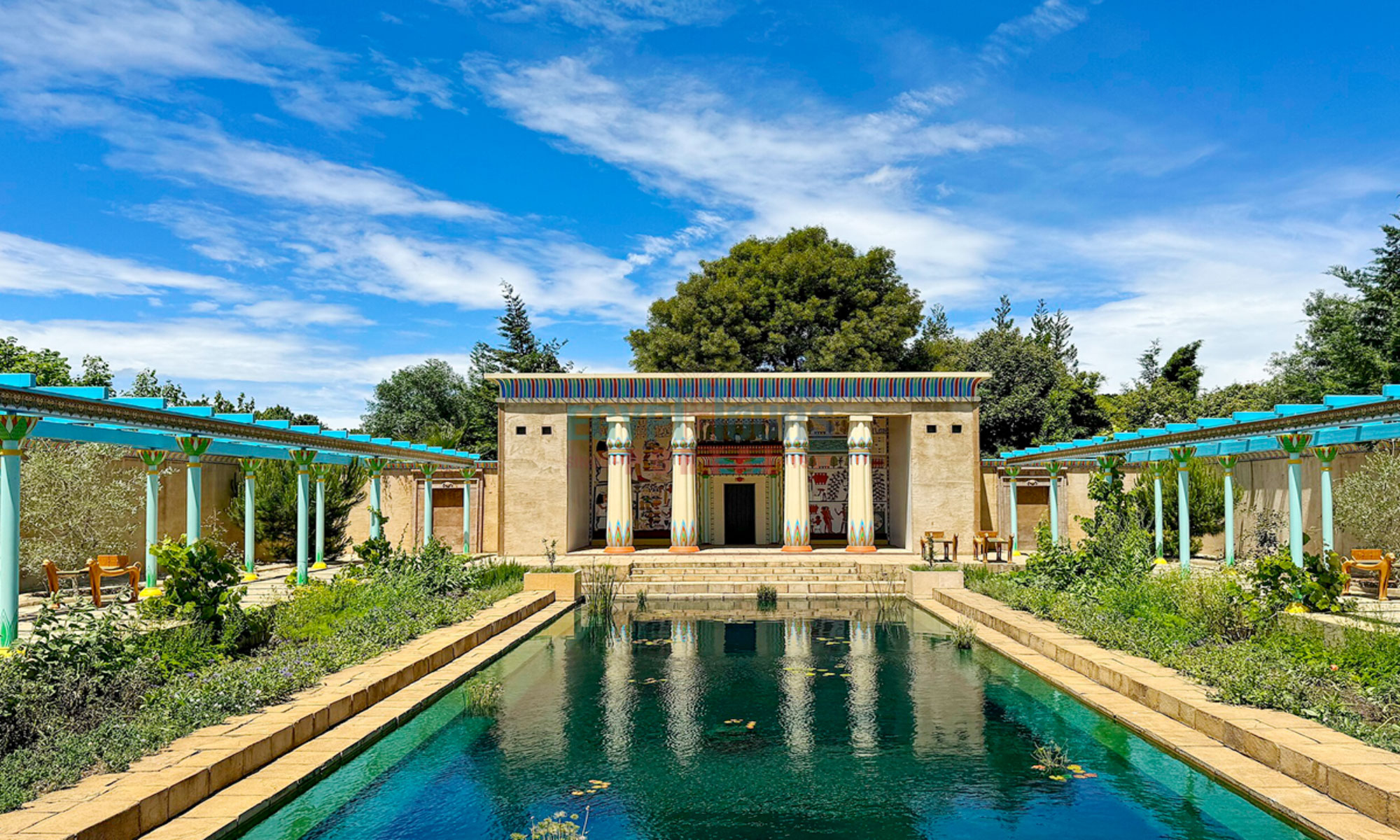
Ancient Egyptian houses were ingenious responses to the environment, crafted to endure the challenges of a desert climate while providing comfort and functionality. These shelters were first built primarily from mudbrick, these homes harnessed the abundant resources of the Nile River, creating practical and sustainable structures.
The design of these houses featured thick walls, small high windows, and flat roofs that reflected the Egyptians' ability to adapt to their surroundings, keeping interiors cool during the day and warm at night.
Ancient Egyptian houses varied greatly in size, layout, and decoration, reflecting the social hierarchy of the time. Commoners lived in simple, single-story homes with minimal furnishings, while the wealthy enjoyed sprawling estates adorned with painted walls, gardens, and private courtyards.
Across all classes, these houses were centers of family life, bustling with domestic activities and communal gatherings. Whether humble or opulent, ancient Egyptian homes were deeply intertwined with the culture, environment, and values of this extraordinary civilization, standing as a symbol of their ingenuity and adaptability.
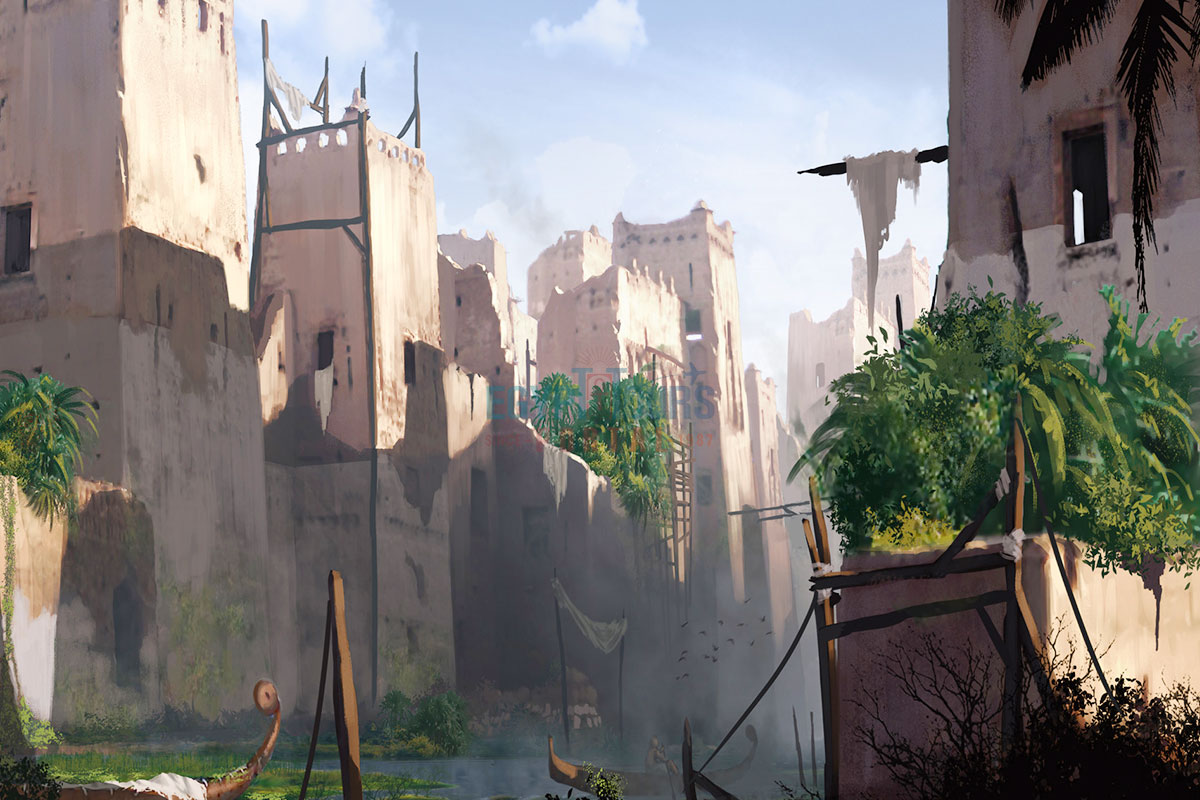
Ancient Egyptian houses were predominantly made of sun-dried mud bricks, widely used from the Predynastic Period (before 3100 BCE) through the New Kingdom (1550–1070 BCE) and beyond. Mud for the bricks was harvested from the fertile Nile River floodplains, mixed with straw or chaff for added strength, and pressed into wooden molds before being left to dry in the sun.
This process created durable yet lightweight bricks suitable for Egypt’s hot, arid climate. Common homes relied entirely on mudbrick, but wealthier residences often incorporated stone, such as limestone or sandstone, for key structural elements like doorways, columns, or flooring. This mix of materials reflected both practicality and social status. However, even mudbrick homes required regular maintenance, as the bricks were susceptible to erosion from rare but heavy rains and the annual Nile floods.
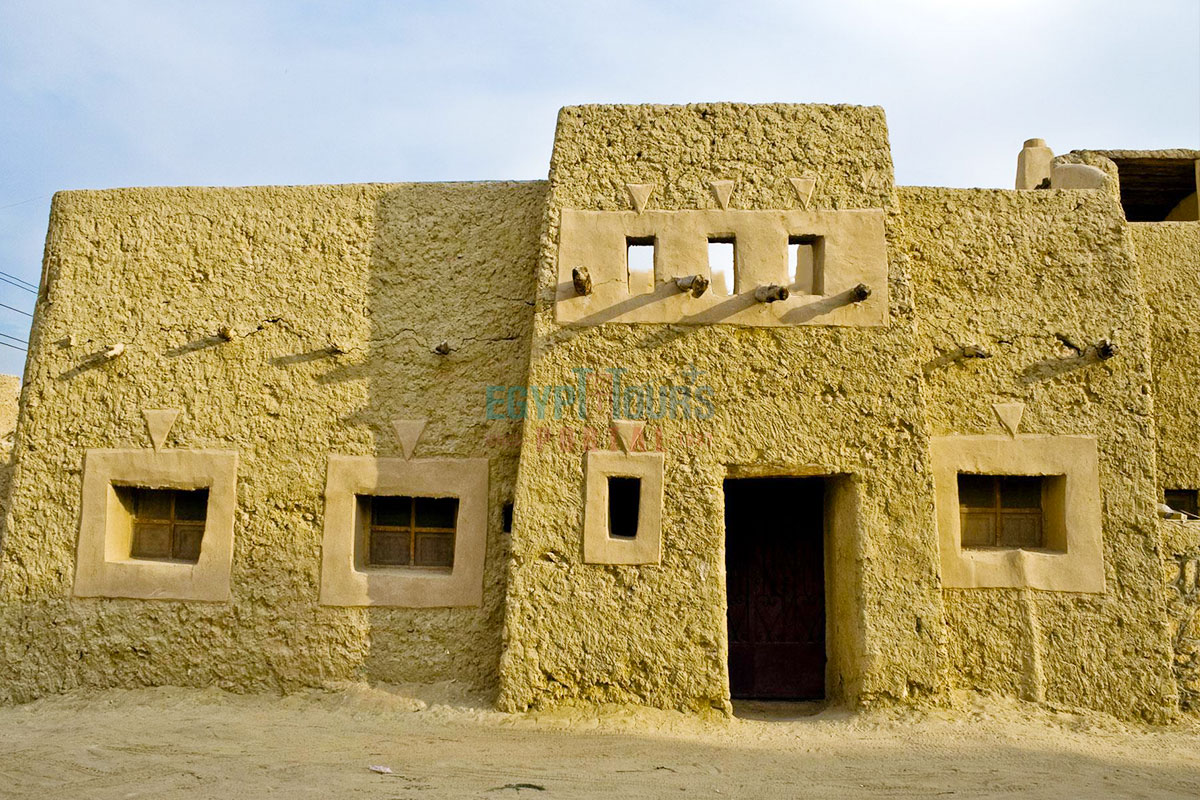
Mudbrick construction defined ancient Egyptian housing as having existed for over three millennia. The choice of mudbrick was dictated by its abundance, cost-effectiveness, and insulating properties. Thick mudbrick walls kept interiors cooler during the scorching days and warmer at night, an essential feature in a desert environment. By the Middle Kingdom (c. 2055–1650 BCE), construction methods became more sophisticated, with builders using standardized bricks for quicker and more efficient construction.
Mudbrick was not only used for homes but also for granaries, storage rooms, and even temple enclosures. These structures, however, required constant upkeep due to environmental wear, reflecting the transient nature of this material. Despite its limitations, mudbrick remained the cornerstone of Egyptian architecture, shaping the landscape of both rural villages and bustling cities like Thebes and Memphis.
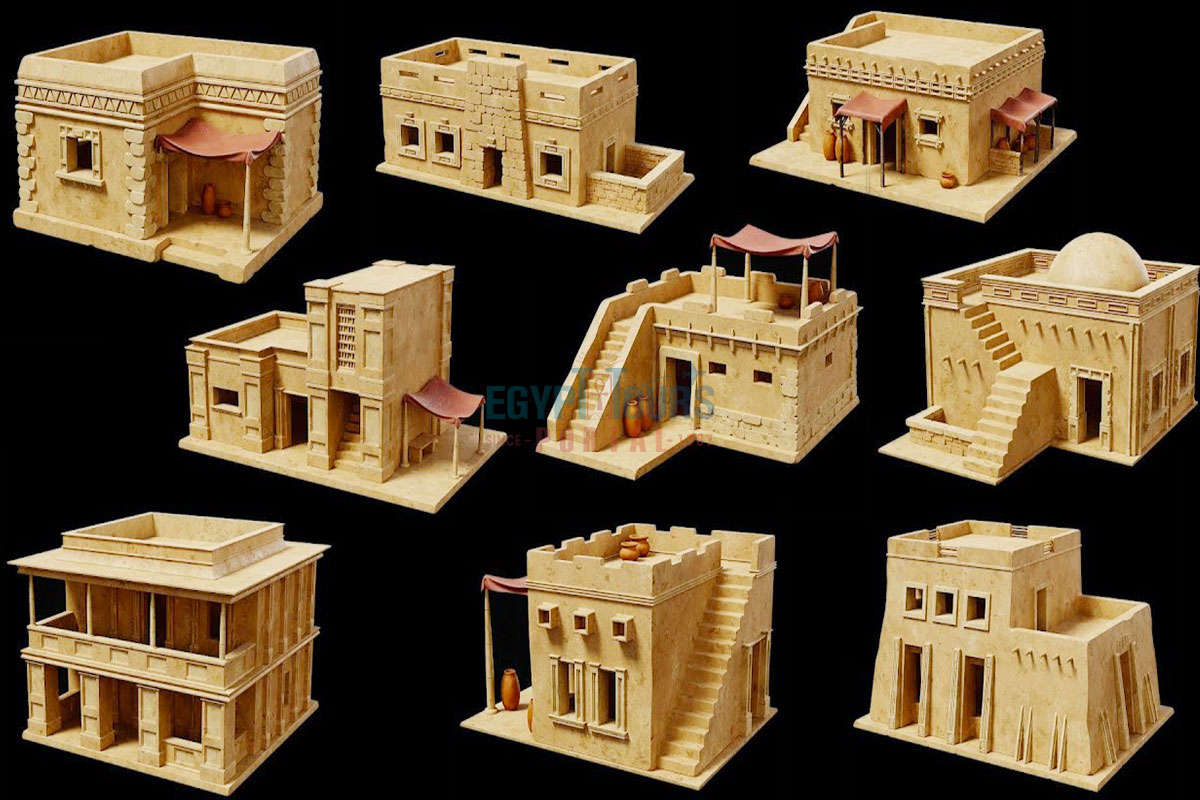
The use of stone in ancient Egyptian homes was reserved for the elite, beginning as early as the Old Kingdom (c. 2686–2181 BCE) and becoming more prominent during the New Kingdom. Wealthy Egyptians incorporated limestone, sandstone, and granite into their residences, particularly for door frames, columns, and ornamental features.
Stone was prized for its durability and aesthetic appeal, often adorned with carvings or brightly painted designs. For example, the homes of aristocrats in Amarna (c. 1350 BCE) often combined stone floors with mudbrick walls to balance practicality and grandeur. The labor-intensive process of quarrying, transporting, and shaping stone meant that it was a material accessible only to the wealthiest members of society, distinguishing their homes from the simpler dwellings of the lower classes.

The layout of ancient Egyptian homes was designed to maximize functionality and adapt to environmental conditions. Most homes had a rectangular design with a central courtyard, which served as the main gathering area and workspace. Surrounding the courtyard were rooms for living, storage, and cooking. Kitchens typically contained clay ovens and grinding stones, while storage rooms housed grain, water jars, and tools.
By the 18th Dynasty (c. 1550–1295 BCE), houses often featured flat roofs that provided additional living space, especially for sleeping during hot nights. The compact design of these homes reflected the practical needs of daily life while incorporating features to cope with the intense heat and occasional flooding.
Social status heavily influenced the size, layout, and decoration of Egyptian homes. Commoners lived in small, single-story mudbrick homes with shared sleeping areas and minimal furnishings. These homes rarely had more than one or two rooms and relied on communal courtyards for activities like cooking and washing. By contrast, the wealthy lived in larger, multi-story homes with distinct rooms for entertaining, sleeping, and dining.
Elite residences often included courtyards with shaded gardens, granaries capable of storing years’ worth of grain, and private wells. By 1500 BCE, aristocratic homes even had basic plumbing systems with copper pipes for hot and cold water. Walls in wealthier homes were adorned with painted murals, showcasing scenes of nature or religious motifs, while floors were tiled, emphasizing luxury and status.
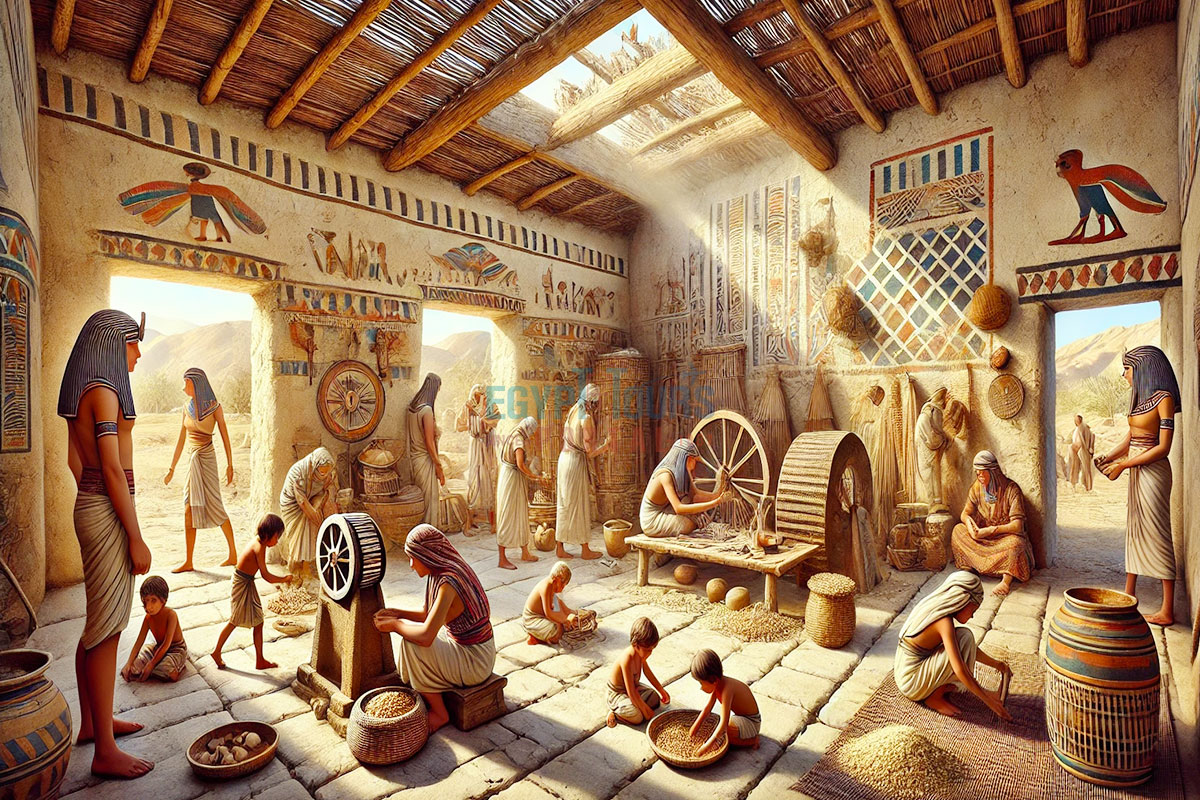
The Daily life of Ancient Egyptians in their homes revolved around family and communal activities. The courtyard served as the heart of the household, where women prepared food, wove textiles, and cared for children.
Men often worked outside the home but contributed to tasks like maintaining mudbrick structures or crafting tools. Meals were simple, consisting of bread, beer, vegetables, and occasionally meat, all prepared using clay ovens and grinding stones found in most kitchens. Social interaction within the household was centered on shared meals and storytelling, reflecting the close-knit structure of Egyptian families.
Flat roofs were a defining feature of Egyptian homes, offering a versatile extension of living space. In the hot, dry climate, roofs were used for drying crops, weaving, or as sleeping quarters during cool nights. Wealthier homes sometimes enhanced their roofs with shade structures or seating areas, transforming them into social spaces.
Roofs also served practical functions, such as catching breezes to cool the interior or storing lightweight items. This adaptive use of rooftops highlights the ingenuity of ancient Egyptians in making the most of their environment.
The disparity between the homes of the poor and the rich was striking. Poor families lived in simple, one-room mudbrick houses with few furnishings, often shared among multiple generations. These homes had little decoration, with bare walls and floors of compacted earth.
In contrast, the rich resided in expansive estates featuring decorated walls, pillared dining halls, and gardens with ponds. Their homes were equipped with ornate furniture, including gilded stools and beds with woven cord bases. Such contrasts in housing underscore the pronounced social hierarchy of ancient Egypt.
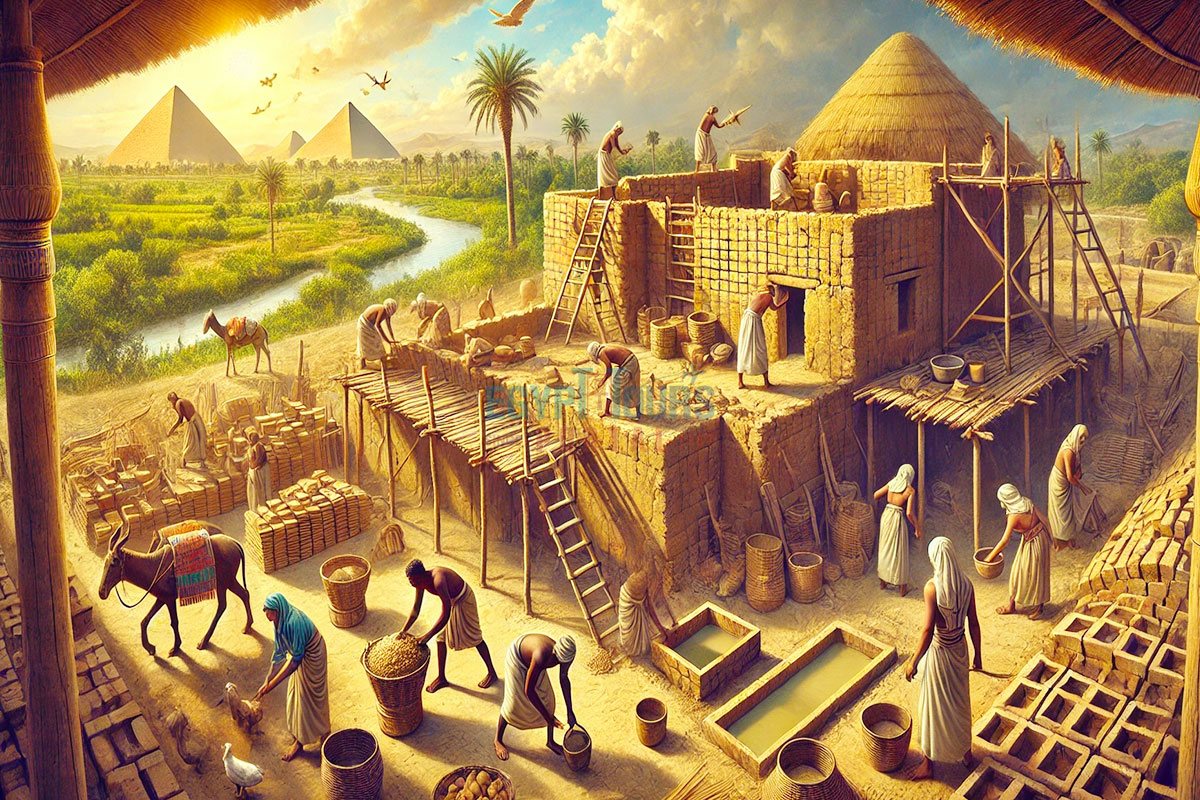
House construction in ancient Egypt relied on manual labor and natural materials. Builders began by crafting mudbricks, which were dried in the sun and stacked to form walls. Wooden beams supported ceilings, while roofs were made of palm fronds and mud for insulation. Small, high windows were designed to allow ventilation while minimizing heat and dust entry.
Elite homes required skilled artisans for decorative elements like painted walls, tiled floors, and carved wooden doors. The collaborative nature of construction often involved family and neighbors, particularly for commoner homes, reflecting the communal spirit of ancient Egyptian society.
Discover the fascinating details about the genius and creative minds of Ancient Egyptian Architects.
Read MoreThe Nile River and Egypt’s climate played a critical role in shaping house design and its overall build. The river provided the essential mud for bricks, while its annual flooding necessitated elevated foundations to prevent damage. The arid climate influenced the use of thick walls for insulation and small windows to reduce heat entry.
Courtyards and flat roofs allowed for outdoor activities during cooler evenings. Even water management systems, such as rain gutters found in some Middle Kingdom houses (c. 2030–1640 BCE), demonstrate how Egyptians adapted to the rare but intense rainfall. These features collectively highlight how environmental factors deeply influence architectural decisions.
From the humble mudbrick homes of the poor to the stone-adorned estates of the wealthy, ancient Egyptian houses reflect a remarkable combination of practicality and artistry. They were not merely shelters but spaces where daily life, social status, and the environment converged to create a legacy of adaptability and innovation.
Utilize every moment of your life by booking one of the magical Egypt tour packages or a marvelous Nile cruise to experience a life-changing travel experience that will bring a feeling of warmth and wonder. If you want to explore the glorious and unique constructions of the ancient Egyptians, you can book our delightful tours.
Private 4 Days Cairo Tour Packages for Australian Travelers 4 days Cairo Egypt Tour ...
Tour Location: Cairo – Giza...
5 Days Cairo and Alexandria Tour Package For Australian Travelers 5 days Cairo and A...
Tour Location: Cairo/Giza/Alexandria...
6 Days Cairo, Luxor & Aswan Tour Package For Australian Travelers 6 days Cairo, ...
Tour Location: Cairo/Giza/Aswan/Luxor...
Amazing 7 Days Cairo and Hurghada Holiday for Australian Travelers 7 Days Cairo &...
Tour Location: Cairo – Giza – Hurgh...
A typical ancient Egyptian house had a rectangular layout with a central courtyard, surrounded by rooms for living, cooking, and storage. The courtyard provided natural light and ventilation and often contained a small well or storage jars for water. Kitchens were simple, equipped with clay ovens and grinding stones. Bedrooms were shared spaces with basic furnishings, such as mats or wooden beds with woven cords. Roofs were used for sleeping during hot nights or for additional storage. Wealthier homes featured more complex layouts, including separate areas for dining, private quarters, and gardens.
Ancient Egyptian houses were primarily made of sun-dried mud bricks, a practical material that was both abundant and inexpensive. Mud was collected from the fertile banks of the Nile, mixed with straw or chaff to increase durability, and then molded and dried in the sun. For wealthier households, elements such as limestone or sandstone were incorporated into specific areas like floors, doorways, or columns for added durability and decoration. Wood, though scarce, was occasionally used for beams, doors, and furniture.
Egyptian houses were designed with functionality and the harsh desert climate in mind. Most homes had thick walls made of mudbrick for insulation, small high windows to allow ventilation while blocking sunlight and dust, and flat roofs that served as additional living or storage space. Layouts often included a central courtyard for light and airflow, surrounded by living quarters, kitchens, and storage rooms. Homes of the wealthy featured multiple stories, private gardens, and elaborate decoration, while simpler homes had one or two rooms with minimal embellishments.
Life in an ancient Egyptian home revolved around family and communal activities. The courtyard was the center of daily life, where cooking, weaving, and socializing took place. Kitchens were equipped with clay ovens and grinding stones for preparing bread and other staples. Interiors were sparsely furnished, with wooden stools, woven mats, and storage chests. Wealthier homes included decorated walls, colorful rugs, and carved wooden furniture. Roofs often served as sleeping areas during cooler nights. The home was a space of productivity, relaxation, and family bonding, reflecting the practical and social values of the Egyptians.
Ancient Egyptians built their homes using manual labor and simple tools. Mudbricks were the primary building material, crafted by mixing mud and straw, shaping it in wooden molds, and allowing it to dry in the sun. Foundations were laid carefully, especially in flood-prone areas, and walls were constructed brick by brick. Wooden beams supported ceilings, while roofs were made from palm fronds or reed mats covered with mud. Skilled laborers decorated wealthier homes with painted walls or tiled floors, while commoners relied on neighbors and family for construction assistance.
The primary material for ancient Egyptian houses was sun-dried mudbrick for walls and foundations. Wood, though scarce, was employed for beams, doors, and furniture. Reeds and palm fronds were utilized for roofing, while stone such as limestone or sandstone was used in wealthier homes for structural and decorative elements. Straw was mixed with mud to strengthen bricks, and clay was used for ovens and storage jars. Wealthy homes also featured painted plaster for walls and tiled floors for added luxury.
Yes, the difference between the homes of the rich and poor in ancient Egypt was significant. Poor Egyptians lived in small, single-story mudbrick homes with one or two rooms and few furnishings. These houses were functional but lacked decorative elements or private spaces. In contrast, wealthy Egyptians resided in large, multi-story houses with courtyards, gardens, and granaries. Their homes were adorned with painted walls, tiled floors, and intricate wooden furniture. The wealthiest estates even included private wells, copper plumbing, and elaborate decorations, reflecting their owners’ social status and resources.
The arid climate of Egypt significantly shaped house design. Thick mudbrick walls provided insulation, keeping interiors cool during the day and warm at night. Small, high windows minimized heat and dust while allowing airflow. Flat roofs offered additional living space during cooler evenings and were often used for sleeping. Courtyards facilitated ventilation and created shaded areas for daily activities. The scarcity of rain meant that most homes had simple drainage systems, though wealthier residences sometimes included gutters or spouts. Overall, homes were designed to maximize comfort and functionality in a harsh desert environment.
The Nile River played a crucial role in the construction of ancient Egyptian houses. The mud used for bricks was sourced from the fertile silt deposited by the river during its annual flood. The Nile also provided water for mixing mud and straw, as well as for other construction processes. Homes near the river were often built on raised platforms to protect them from floodwaters. The river’s predictable cycles ensured a steady supply of materials, while its trade routes facilitated the transport of stone and wood for wealthier households. The Nile’s influence extended beyond materials, shaping the very layout and resilience of Egyptian homes.
The entire country of Egypt deserve to be explored with its every heavenly detail but there are places that must be seen before any other such as the breathtaking Hurghada's red sea, The wonders of Cairo the pyramids of Giza, the great sphinx, the Egyptian Museum, Khan El Khalili Bazaar, the wonders of Luxor like Valley of the Kings, Karnak & Hatshepsut temple and the wonders of Aswan such as Abu Simbel temples, Philea temple, Unfinished obelisk and The Wonders of Alexandria like Qaitbat Citadel, Pompey's Pillar and Alexandria Library. Read more about the best places to visit in Egypt.
If you want to apply for a Visa On Arrival that lasts for 30 days then you should be one of the eligible countries, have a valid passport with at least 6 months remaining and pay 25$ USD in cash, as for the E-Visa for 30 day you should have a valid passport for at least 8 months, complete the online application, pay the e-visa fee then print the e-visa to later be presented to the airport border guard. You could also be one of the lucky ones who can obtain a free visa for 90 days. Read more about Egypt travel visa.
Egypt has a variety of delicious cuisines but we recommend “Ful & Ta’meya (Fava Beans and Falafel)”, Mulukhiya, “Koshary”, a traditional Egyptian pasta dish, and Kebab & Kofta, the Egyptian traditional meat dish.
The best time to travel to Egypt is during the winter from September to April as the climate becomes a little tropical accompanied by a magical atmosphere of warm weather with a winter breeze. You will be notified in the week of your trip if the Climate is unsafe and if any changes have been made.
You should pack everything you could ever need in a small bag so you could move easily between your destinations.
We have been creating the finest vacations for more than 20 years around the most majestic destinations in Egypt. Our staff consists of the best operators, guides and drivers who dedicate all of their time & effort to make you have the perfect vacation. All of our tours are customized by Travel, Financial & Time consultants to fit your every possible need during your vacation. It doesn't go without saying that your safety and comfort are our main priority and all of our resources will be directed to provide the finest atmosphere until you return home.
You will feel safe in Egypt as the current atmosphere of the country is quite peaceful after the government took powerful measures like restructuring the entire tourist police to include all the important and tourist attractions in Egypt. Read more about is it safe to travel to Egypt.
Wear whatever feels right and comfortable. It is advised to wear something light and comfortable footwear like a closed-toe shoe to sustain the terrain of Egypt. Put on sun block during your time in Egypt in the summer to protect yourself from the sun.
The best activity is by far boarding a Nile Cruise between Luxor and Aswan or Vise Versa. Witness the beauty of Egypt from a hot balloon or a plane and try all the delicious Egyptian cuisines and drinks plus shopping in old Cairo. Explore the allure and wonders of the red sea in the magical city resorts of Egypt like Hurghada and many more by diving and snorkeling in the marine life or Hurghada. Behold the mesmerizing western desert by a safari trip under the heavenly Egyptian skies.
There are a lot of public holidays in Egypt too many to count either religious or nation, the most important festivals are the holy month of Ramadan which ends with Eid Al Fitr, Christmas and new years eve. Read more about festivals & publich holidays in Egypt.
Egypt is considered to be one of the most liberal Islamic countries but it has become a little bit conservative in the last couple of decades so it is advised to avoid showing your chest, shoulders or legs below the knees.
Arabic is the official language and Most Egyptians, who live in the cities, speak or understand English or at least some English words or phrases. Fewer Egyptians can speak French, Italian, Spanish, and German. Professional tour guides, who work in the tourism sector, are equipped to handle visitors who cannot speak Arabic and they will speak enough English and other languages to fulfill the needs of all our clients.
The fastest way is a car, of course, a taxi. If you are in Cairo ride a white taxi to move faster or you could board the fastest way of transportation in Egypt metro if the roads are in rush hour.
The temperature in Egypt ranges from 37c to 14 c. Summer in Egypt is somehow hot but sometimes it becomes cold at night and winter is cool and mild. The average of low temperatures vary from 9.5 °C in the wintertime to 23 °C in the summertime and the average high temperatures vary from 17 °C in the wintertime to 32 °C in the summertime. The temperature is moderate all along the coasts.
It is the home of everything a traveler might be looking for from amazing historical sites dating to more than 4000 years to enchanting city resorts & beaches. You will live the vacation you deserve as Egypt has everything you could possibly imagine.









